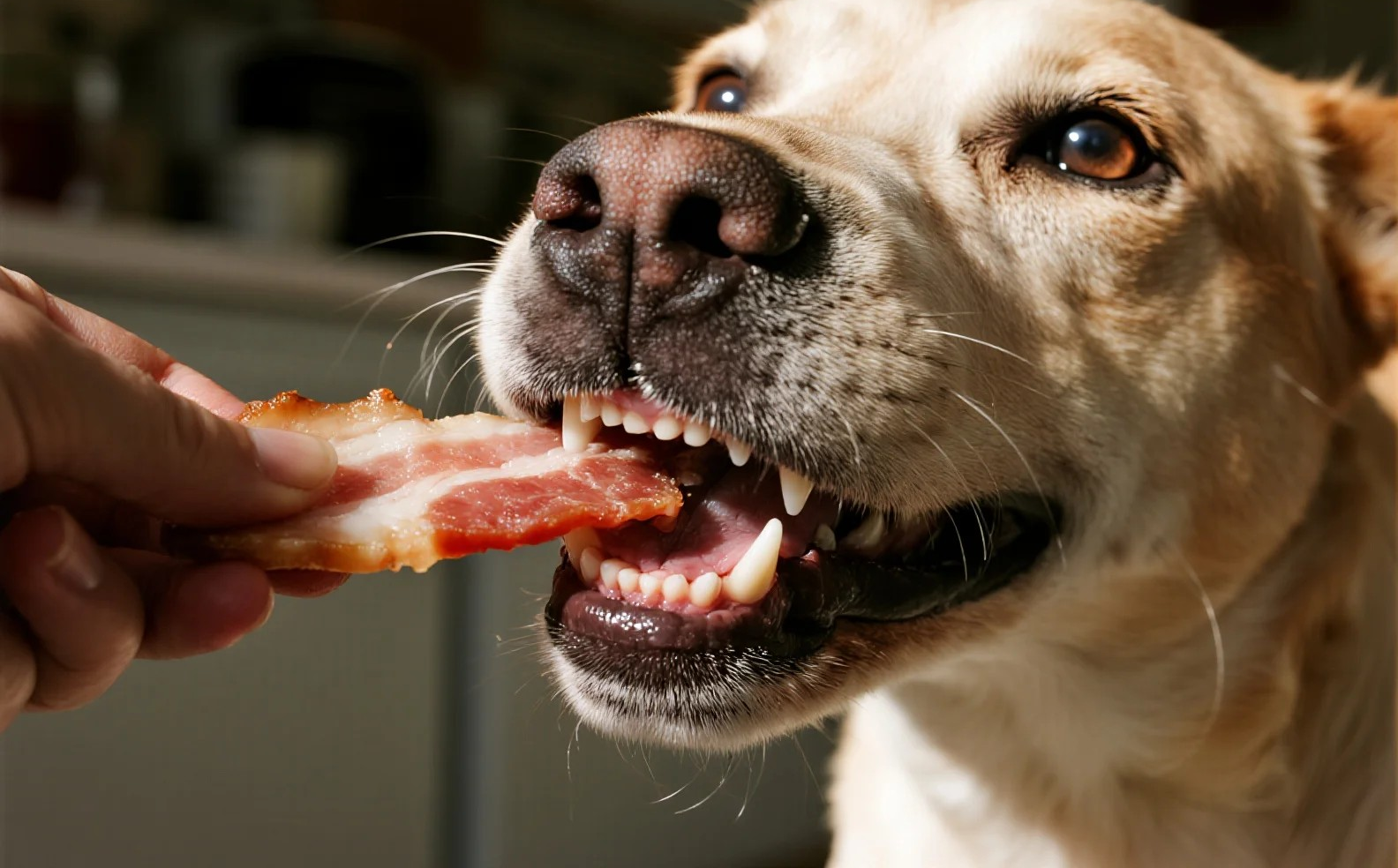Many dog owners love to pamper their pets with tasty treats, and bacon is often high on that list. The savory aroma and crispy texture of bacon can make it an irresistible snack for dogs. However, a common question arises: can dogs safely enjoy raw bacon? In this article, we will explore the potential risks associated with giving raw bacon to dogs, along with some safer alternatives to consider.
The Allure of Bacon
First, let’s understand why bacon is so appealing, not just to humans but to dogs as well. Bacon is rich in fats and has a strong flavor that can catch a dog’s attention easily. Many pet owners have even reported that their dogs seem to have a unique affinity for this cured meat. However, just because a food is enjoyable doesn’t mean it’s safe for our furry friends.
Nutritional Content of Bacon
Bacon is primarily made up of fat, with some protein and a small amount of carbohydrates. While dogs do need fat in their diet, the high-fat content in bacon can pose health risks, especially when consumed regularly or in large quantities. In addition to being high in fat, raw bacon may also contain harmful bacteria such as Salmonella or E. coli. These bacteria can cause gastrointestinal issues in both dogs and humans.
Risks of Feeding Raw Bacon to Dogs
Bacterial Contamination: One of the most significant risks of feeding raw bacon to dogs is bacterial contamination. Raw meat can harbor pathogens that can cause serious health issues. If dogs consume raw bacon contaminated with bacteria, they may suffer from vomiting, diarrhea, and abdominal pain
High Fat Content: The fat in bacon can lead to pancreatitis in dogs, a painful inflammation of the pancreas. This condition can be life-threatening and may require hospitalization.
Sodium Levels: Bacon is notoriously high in sodium. Excessive salt intake can lead to dehydration, salt poisoning, and kidney issues in dogs. They are sensitive to dietary sodium, and too much can have serious consequences.
Additives and Preservatives: Many bacon products contain additives and preservatives that may be toxic to dogs like nitrites and nitrates. These chemicals can lead to health problems over time.
- Obesity and Other Health Issues: Regularly giving your dog bacon can contribute to obesity due to its high caloric content. Obesity in dogs can lead to a myriad of health issues, including diabetes, heart disease, and joint problems.
Safe Treat Alternatives
If you want to spoil your dog with tasty treats without risking their health, consider these alternatives:
Cooked Bacon: If you really want to give your dog a taste of bacon, cook it thoroughly to eliminate harmful bacteria. This will still be high in fat and sodium, so use it sparingly as an occasional treat.
Turkey or Chicken: Lean meats like turkey or chicken, without the skin or seasoning, can be excellent, healthier alternatives. They are high in protein but lower in fat compared to bacon.
Dehydrated Meat Treats: Store-bought dehydrated meat treats are often available in various flavors and are generally safer than raw bacon. Look for high-quality brands that use minimal ingredients.
- Fruits and Vegetables: Many dogs enjoy fruits like apples or bananas, or vegetables like carrots or sweet potatoes. These can be healthy and low-calorie treat options.
Conclusion
While the idea of giving your dog raw bacon may be tempting, it’s vital to consider the risks involved. Bacterial contamination, high fat and sodium levels, and added preservatives can all pose serious health risks for your furry friend. If you choose to give bacon, cooking it eliminates some of the dangers, but it should still only be given occasionally and in moderation.
Instead, consider healthier treat alternatives that are not only safe but can also offer nutritional benefits. Always consult your veterinarian for tailored advice on your pet’s diet, and remember that a well-balanced diet contributes significantly to your dog’s overall health and well-being.
In closing, while it might be hard to resist sharing those delicious bacon bites with your furry companion, it’s essential to prioritize their health. By understanding the risks and opting for safer alternatives, you can ensure that your dog enjoys a tasty treat without jeopardizing their well-being.
